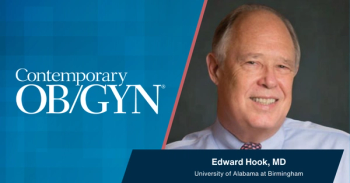
Contemporary OB/GYN week in review: Postpartum psychosis, preeclampsia risk, and more
Review some of the top stories from the Contemporary OB/GYN website over the last week, and catch up on anything you may have missed.
Thank you for visiting the Contemporary OB/GYN® website. Take a look at some of our top stories from last week (Monday, June 02, 2025 - Friday, June 06, 2025), and click each link to read and watch anything you may have missed.
Veerle Bergink, MD, PhD, highlights familial links of postpartum psychosis
In a recent interview with Contemporary OB/GYN, Veerle Bergink, MD, PhD, professor in the department of psychology at Icahn School of Medicine at Mount Sinai, discussed the implications of postpartum psychosis and highlighted findings from her research on familial risk and prevention strategies.
Postpartum psychosis is a rare but severe psychiatric emergency that typically arises within days to weeks after childbirth. It significantly impacts maternal quality of life and is a leading cause of maternal death in the first postpartum year, often because of suicide. Despite its severity, postpartum psychosis is highly treatable if identified early, with most women achieving full recovery within weeks when given appropriate psychiatric care, including lithium and antipsychotics.
Bergink emphasized the importance of early detection and proactive risk assessment during pregnancy. Her study found that women with a first-degree relative who experienced postpartum psychosis have a 10-fold increased relative risk. However, because the condition is rare, the absolute risk remains low at approximately 1.5%. The data offer reassurance to concerned family members while also underlining that postpartum psychosis has a heritable component, suggesting the need for continued genetic research.
Ivie Odiase, MD, on universal aspirin implementation for reducing preeclampsia risk
While conducting clinical rotations at St. Barnabas Hospital in the Bronx, Ivie Odiase, MD, now an obstetrics and gynecology resident at Mount Sinai West, identified a significant gap in the use of aspirin for preeclampsia prevention. “I started this project to see in our population, how many people [who] met criteria for aspirin prophylaxis by ACOG were actually receiving it,” said Odiase. A retrospective analysis revealed that only 30% of eligible patients were prescribed aspirin.
The findings from this quality improvement project were presented at the 2025 ACOG Annual Clinical and Scientific Meeting.
Sharon Erdrich, PhD, discusses why oral health should be routine in health care
In a recent interview with Contemporary OB/GYN, Sharon Erdrich, researcher from the School of Pharmacy at the University of Sydney, discussed the vital role clinicians can play in promoting better oral health among their patients and the broader implications of oral hygiene on systemic health. She emphasized that the mouth is often overlooked in general health assessments, despite being the entry point of the gastrointestinal system and a potential source of systemic disease.
Erdrich began by critiquing the current clinical practice where the mouth is typically only examined in response to specific complaints, such as a sore throat or a visible issue like a tongue lesion. She advocated for a more proactive approach where oral health assessments are integrated into routine clinical evaluations. This includes asking patients about the condition of their teeth and gums and how they perceive their oral health.
Susan Khalil, MD, discusses staged uterine artery embolization for symptomatic uterine fibroids
Susan Khalil, MD, assistant professor at the Icahn School of Medicine at Mount Sinai and program director for the minimally invasive gynecologic surgery fellowship at Mount Sinai Hospital, discussed research presented at the 2025 ACOG Annual Clinical and Scientific Meeting exploring the use of staged uterine artery embolization to improve feasibility and outcomes in uterine fibroid treatment
Khalil emphasized that large uterine fibroids can complicate hysterectomy procedures by reducing visibility and increasing the risk of morbidity. “Patient safety is going to come first, and sometimes large uterine fibroid size can also just limit visibility, can increase chances of having additional things that can add to morbidity,” she said.
Racial disparities found in severe maternal morbidity after cesarean delivery
Severe maternal morbidity (SMM) patterns differ based on race and ethnicity among patients with a prior cesarean delivery, according to a recent study published in JAMA Network Open.
An unplanned repeat cesarean birth was reported in 15.3%, 11.5%, and 9.1% of Black, Hispanic, and White individuals, respectively. SMM rates among these populations were 1.5%, 0.9%, and 0.6%, respectively, highlighting a reduction among White patients.
When including 3-category birth mode and race and ethnicity as independent variables, an adjusted odds ratio (aOR) of 1.60 for SMM was reported among Black patients vs White patients. In those with planned and unplanned repeat cesarean delivery vs VBAC, the aORs were 1.57 and 3.05, respectively.
Newsletter
Get the latest clinical updates, case studies, and expert commentary in obstetric and gynecologic care. Sign up now to stay informed.










